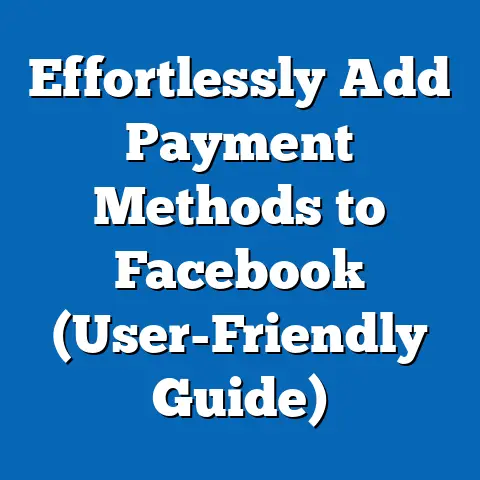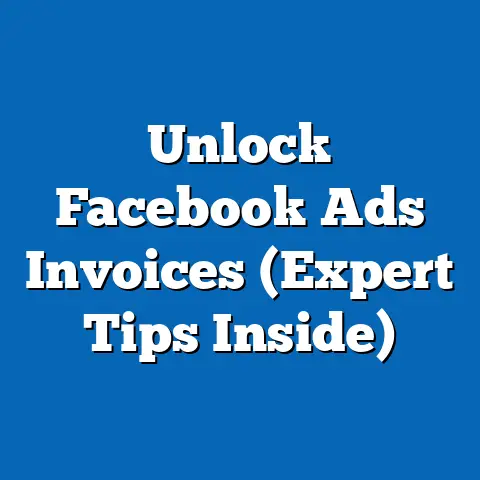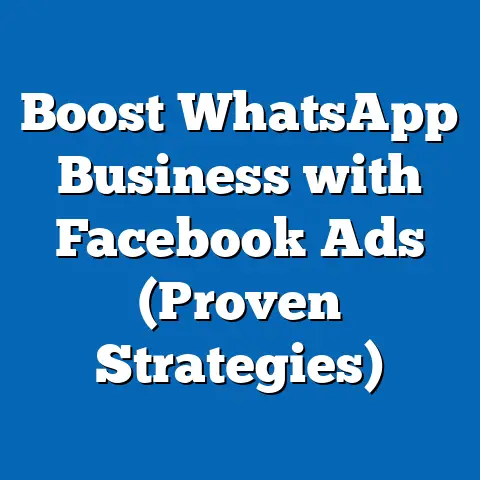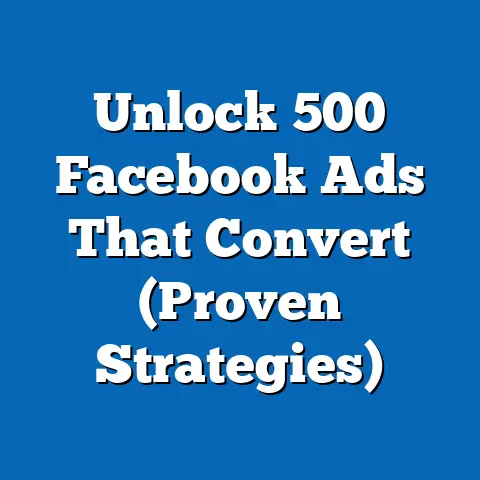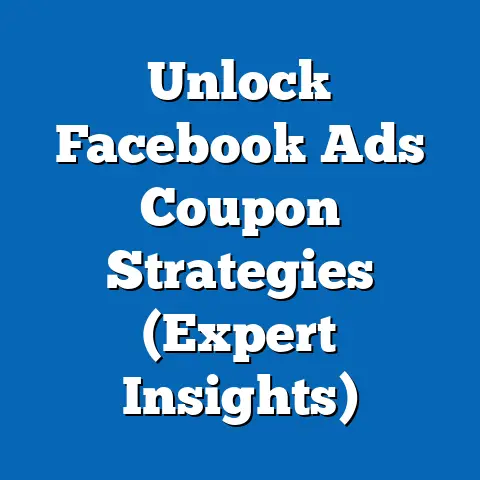Sell Weed Accessories on Facebook Ads (Unlocking Profit Potential)
Have you ever felt like you’re shouting into the void when trying to market your weed accessories business? I know the feeling. For years, entrepreneurs in the cannabis space have wrestled with the unique challenges of advertising on platforms like Facebook. It’s a constant battle against strict policies, vague guidelines, and the ever-present fear of ad rejections. You invest time, money, and passion into creating high-quality products, only to be met with a digital brick wall. It’s frustrating, confusing, and can leave you feeling utterly helpless. But what if I told you there’s a way to navigate this complex landscape and unlock the profit potential hidden within Facebook’s massive user base? It’s not easy, but with the right strategy and a deep understanding of the platform, you can successfully sell weed accessories on Facebook Ads.
Understanding the Market
Before diving into the intricacies of Facebook Ads, let’s take a step back and analyze the market we’re dealing with. The cannabis accessories market is booming, driven by the increasing legalization and acceptance of cannabis across the globe. According to Grand View Research, the global cannabis accessories market was valued at $14.67 billion in 2022 and is projected to reach $28.75 billion by 2030. This growth is fueled by a variety of factors, including changing consumer attitudes, innovative product development, and the expansion of legal cannabis markets.
Identifying Your Target Demographic
Understanding your target audience is crucial for any successful marketing campaign, and the weed accessories market is no exception. Here are some key demographics to consider:
- Age Groups: While cannabis use spans various age groups, the most active consumers tend to be millennials (25-40) and Gen Z (18-24). However, don’t overlook older demographics, as they represent a growing segment of the market.
- Interests: Identifying the specific interests of your target audience is essential for effective targeting on Facebook. Common interests related to cannabis accessories include:
- Cannabis culture
- Vaping
- Rolling papers
- Glass pipes
- CBD products
- Music festivals
- Outdoor activities
- Purchasing Behaviors: Understanding how your target audience shops is critical. Are they more likely to purchase online or in-store? Do they prioritize price, quality, or brand reputation? Are they influenced by social media recommendations or reviews? Answering these questions will help you tailor your advertising messaging and targeting strategies.
- Cannabis culture
- Vaping
- Rolling papers
- Glass pipes
- CBD products
- Music festivals
- Outdoor activities
The Power of Niche Marketing
The cannabis accessories market is incredibly diverse, encompassing a wide range of products from rolling papers and vaporizers to storage solutions and grinders. Each of these products appeals to different customer segments with unique needs and preferences. That’s why niche marketing is so important.
For example, if you’re selling high-end vaporizers, your target audience might be affluent professionals who value quality, convenience, and discretion. On the other hand, if you’re selling affordable rolling papers, your target audience might be budget-conscious consumers who prioritize value and accessibility.
By focusing on a specific niche, you can tailor your advertising messaging, visuals, and targeting strategies to resonate with a particular group of customers, increasing the likelihood of conversions.
Takeaway: Before launching your Facebook Ads campaign, take the time to research your target market, identify your niche, and understand the needs and preferences of your ideal customer. This will help you create more effective ads and maximize your return on investment.
Facebook Ads Ecosystem
Navigating the Facebook Ads ecosystem can feel like trying to decipher an alien language. But don’t worry, I’m here to break it down for you. Facebook’s advertising platform is a powerful tool that allows you to reach billions of potential customers worldwide. However, it’s essential to understand how it works and how to use it effectively.
Understanding Facebook’s Advertising Platform
Facebook’s advertising platform operates on an auction-based system. Advertisers bid for the opportunity to show their ads to specific users based on factors like demographics, interests, and behaviors. The higher your bid and the more relevant your ad, the more likely it is to be shown to your target audience.
The platform offers a wide range of ad formats, including:
- Image Ads: Simple and effective, image ads are a great way to showcase your products and brand.
- Video Ads: Engaging and attention-grabbing, video ads can be used to tell stories, demonstrate product features, and connect with potential customers on an emotional level.
- Carousel Ads: Allow you to showcase multiple products or features in a single ad, providing users with a more interactive experience.
- Collection Ads: Designed for e-commerce businesses, collection ads allow you to showcase a curated selection of products in a visually appealing format.
- Lead Ads: Designed to generate leads, lead ads allow users to submit their contact information directly within the Facebook platform.
The Importance of Understanding Facebook’s Advertising Policies
Facebook has strict advertising policies that prohibit the promotion of illegal, harmful, or misleading products and services. This includes cannabis and related products. However, there are ways to advertise weed accessories on Facebook while staying within the platform’s guidelines.
The key is to avoid directly promoting cannabis or implying that your products are intended for use with cannabis. Instead, focus on the functionality, design, and benefits of your accessories.
For example, instead of saying “Buy our new grinder for your weed,” you could say “Upgrade your herb preparation with our premium grinder.”
It’s also essential to avoid using images or videos that depict cannabis use or paraphernalia. Instead, focus on showcasing your accessories in a clean, professional, and non-offensive manner.
Setting Up Your Facebook Business Account
Before you can start advertising on Facebook, you’ll need to set up a Facebook Business account. This is a separate account from your personal Facebook profile that allows you to manage your business pages, ad accounts, and other marketing assets.
Here’s how to set up your Facebook Business account:
- Go to business.facebook.com and click “Create Account.”
- Enter your business name, your name, and your business email address.
- Follow the prompts to create your account and add your business page.
- Set up your ad account, providing your payment information and business details.
- Verify your business to ensure that your account is legitimate and trustworthy.
Takeaway: Understanding the Facebook Ads ecosystem, including the platform’s advertising policies and the importance of setting up a Business account, is essential for success. By following these guidelines, you can navigate the complexities of the platform and reach your target audience effectively.
Crafting Effective Ads
Creating effective Facebook Ads is an art form. It requires a blend of creativity, strategy, and data analysis. The goal is to capture the attention of your target audience, communicate your message clearly, and drive conversions.
The Power of Compelling Visuals
In the fast-paced world of social media, visuals are king. Your ad’s image or video is the first thing that potential customers will see, so it’s essential to make a strong impression.
Here are some tips for creating compelling visuals:
- Use High-Quality Images and Videos: Avoid blurry, pixelated, or poorly lit images. Invest in professional photography or videography to showcase your products in the best possible light.
- Focus on Aesthetics: Choose visuals that are visually appealing and relevant to your target audience. Consider factors like color, composition, and style.
- Showcase Your Products in Action: Instead of just showing static images of your accessories, consider showcasing them in use. This will help potential customers visualize how they can benefit from your products.
- Use Eye-Catching Graphics and Animations: If you’re using video ads, consider incorporating eye-catching graphics and animations to capture attention and keep viewers engaged.
Writing Engaging Ad Copy
Your ad copy is just as important as your visuals. It’s your opportunity to communicate your message, highlight the benefits of your products, and persuade potential customers to take action.
Here are some tips for writing engaging ad copy:
- Know Your Audience: Tailor your ad copy to resonate with your target audience. Use language, tone, and messaging that they will understand and appreciate.
- Highlight the Benefits, Not Just the Features: Instead of just listing the features of your accessories, focus on the benefits they provide. How will your products make your customers’ lives easier, more enjoyable, or more convenient?
- Use Strong Calls to Action: Tell potential customers exactly what you want them to do. Use strong calls to action like “Shop Now,” “Learn More,” or “Get Yours Today.”
- Keep It Concise: In the age of short attention spans, it’s essential to keep your ad copy concise and to the point. Get straight to the benefits and avoid unnecessary jargon.
The Importance of Tailored CTAs
Your call to action (CTA) is the final piece of the puzzle. It’s the instruction that tells potential customers what you want them to do next. A strong CTA can significantly increase your conversion rates.
Here are some examples of effective CTAs for weed accessories:
- Shop Now: Directs users to your online store to browse and purchase your products.
- Learn More: Directs users to a landing page with more information about your products or your brand.
- Get Yours Today: Creates a sense of urgency and encourages users to take action immediately.
- Discover the Difference: Highlights the unique benefits of your products and encourages users to explore further.
- Elevate Your Experience: Appeals to users’ desire for a premium and enjoyable experience.
Learning from Successful Ad Campaigns
One of the best ways to improve your own Facebook Ads is to study successful ad campaigns from other businesses in the cannabis accessories niche.
Look for ads that:
- Use compelling visuals and engaging ad copy.
- Target a specific audience with relevant messaging.
- Have a clear and persuasive call to action.
- Generate high click-through rates and conversion rates.
Analyze what makes these ads effective and try to incorporate similar elements into your own campaigns.
For example, I saw one ad recently for a high-end vaporizer that featured a sleek, minimalist design and a tagline that read, “Experience the future of vaping.” The ad targeted affluent professionals who value quality and innovation. It was simple, elegant, and highly effective.
The Art of Storytelling
Storytelling is a powerful tool that can help you connect with potential customers on an emotional level. By telling compelling stories about your brand, your products, or your customers, you can create a deeper connection and build trust.
For example, you could tell the story of how your company was founded, the challenges you faced, and the values that drive your business. Or you could share testimonials from satisfied customers who have benefited from your products.
Takeaway: Crafting effective Facebook Ads requires a blend of creativity, strategy, and data analysis. By focusing on compelling visuals, engaging ad copy, tailored CTAs, and the power of storytelling, you can create ads that capture the attention of your target audience and drive conversions.
Targeting and Retargeting Strategies
Reaching the right audience is paramount to the success of any Facebook Ads campaign. You can have the most visually stunning ad with the most persuasive copy, but if it’s shown to the wrong people, it’s essentially wasted effort and money. Facebook offers a range of powerful targeting tools that allow you to pinpoint your ideal customers with incredible precision.
Facebook’s Audience Targeting Tools
- Custom Audiences: These allow you to target people who have already interacted with your business in some way. This could include:
- Website Visitors: Target people who have visited your website, viewed specific products, or added items to their cart.
- Customer Lists: Upload your existing customer list to target people who have already purchased from you.
- Facebook Page Engagers: Target people who have liked your Facebook page, commented on your posts, or watched your videos.
- Lookalike Audiences: This is where the magic happens. Lookalike audiences allow you to create new audiences based on the characteristics of your existing customers or website visitors. Facebook analyzes the demographics, interests, and behaviors of your source audience and finds similar people who are likely to be interested in your products.
- Interest Targeting: This allows you to target people based on their expressed interests, hobbies, and activities. For example, you could target people who are interested in cannabis culture, vaping, or specific types of accessories.
- Behavioral Targeting: This allows you to target people based on their purchasing behaviors, device usage, and other online activities. For example, you could target people who are frequent online shoppers or who have recently purchased similar products.
- Demographic Targeting: This allows you to target people based on their age, gender, location, education, and other demographic factors.
- Website Visitors: Target people who have visited your website, viewed specific products, or added items to their cart.
- Customer Lists: Upload your existing customer list to target people who have already purchased from you.
- Facebook Page Engagers: Target people who have liked your Facebook page, commented on your posts, or watched your videos.
The Power of Retargeting
Retargeting is a powerful strategy that allows you to re-engage users who have previously shown interest in your products but haven’t yet made a purchase. It’s like giving them a gentle nudge to remind them of what they’re missing out on.
Here’s how retargeting works:
- Install the Facebook Pixel: The Facebook Pixel is a small piece of code that you install on your website. It tracks the actions that visitors take on your site, such as viewing products, adding items to their cart, or submitting their contact information.
- Create Retargeting Audiences: Use the Facebook Pixel data to create retargeting audiences based on specific actions. For example, you could create an audience of people who have viewed a particular product but haven’t added it to their cart.
- Create Retargeting Ads: Create ads that are specifically designed to re-engage these users. For example, you could show them the product they viewed with a special discount or offer.
Retargeting is incredibly effective because it allows you to reach people who are already familiar with your brand and products. They’re more likely to convert than cold traffic.
Analyzing Audience Data to Refine Targeting
The key to successful targeting is to continuously analyze your audience data and refine your strategies. Facebook provides a wealth of data about your audience, including demographics, interests, behaviors, and engagement metrics.
Use this data to:
- Identify your most profitable audiences: Which audiences are generating the highest conversion rates and return on investment?
- Identify underperforming audiences: Which audiences are not responding to your ads?
- Test different targeting options: Experiment with different combinations of demographics, interests, and behaviors to find the most effective targeting strategies.
- Refine your ad copy and visuals: Tailor your ads to resonate with the specific interests and needs of each audience.
Takeaway: Targeting and retargeting are essential components of a successful Facebook Ads campaign. By leveraging Facebook’s powerful targeting tools and continuously analyzing your audience data, you can reach the right people with the right message and maximize your return on investment.
Budgeting and Ad Spend Optimization
Even with the most compelling ads and laser-focused targeting, a poorly managed budget can derail your Facebook Ads efforts. Understanding how to allocate your ad spend effectively and optimize your campaigns for maximum ROI is crucial for long-term success.
Effective Budgeting Strategies
- Daily vs. Lifetime Budgets: Facebook offers two main budgeting options: daily budgets and lifetime budgets.
- Daily Budget: This allows you to set a fixed amount that you’re willing to spend each day. Facebook will then optimize your ad delivery to stay within that budget.
- Lifetime Budget: This allows you to set a total amount that you’re willing to spend over the entire duration of your campaign. Facebook will then optimize your ad delivery to maximize results within that budget.
- Which one should you choose? For ongoing campaigns, a daily budget is often the better option as it allows for more flexibility and control. For campaigns with a specific end date, a lifetime budget can be more efficient.
- Bidding Strategies: Facebook offers several bidding strategies that allow you to control how much you’re willing to pay for each ad impression or click.
- Lowest Cost: This strategy aims to get you the most results for your budget, without considering cost per result.
- Cost Cap: This strategy allows you to set a target cost per result. Facebook will then try to get you results at or below that cost.
- Bid Cap: This strategy allows you to set a maximum bid for each ad impression or click.
- Which one should you choose? The best bidding strategy depends on your goals and budget. For beginners, the “Lowest Cost” strategy is often a good starting point. As you gain more experience, you can experiment with other bidding strategies to optimize your results.
- Daily Budget: This allows you to set a fixed amount that you’re willing to spend each day. Facebook will then optimize your ad delivery to stay within that budget.
- Lifetime Budget: This allows you to set a total amount that you’re willing to spend over the entire duration of your campaign. Facebook will then optimize your ad delivery to maximize results within that budget.
- Which one should you choose? For ongoing campaigns, a daily budget is often the better option as it allows for more flexibility and control. For campaigns with a specific end date, a lifetime budget can be more efficient.
- Lowest Cost: This strategy aims to get you the most results for your budget, without considering cost per result.
- Cost Cap: This strategy allows you to set a target cost per result. Facebook will then try to get you results at or below that cost.
- Bid Cap: This strategy allows you to set a maximum bid for each ad impression or click.
- Which one should you choose? The best bidding strategy depends on your goals and budget. For beginners, the “Lowest Cost” strategy is often a good starting point. As you gain more experience, you can experiment with other bidding strategies to optimize your results.
Tracking Ad Performance Metrics
Tracking your ad performance metrics is essential for assessing your return on investment and identifying areas for improvement.
Key metrics to track include:
- Impressions: The number of times your ad was shown to users.
- Reach: The number of unique users who saw your ad.
- Click-Through Rate (CTR): The percentage of users who clicked on your ad after seeing it. A high CTR indicates that your ad is relevant and engaging to your target audience.
- Conversion Rate: The percentage of users who completed a desired action after clicking on your ad, such as making a purchase or submitting their contact information.
- Cost Per Click (CPC): The average cost you pay for each click on your ad.
- Cost Per Acquisition (CPA): The average cost you pay for each conversion.
- Return on Ad Spend (ROAS): The amount of revenue you generate for every dollar you spend on advertising.
Optimizing Ad Spend Based on Performance Data
The key to optimizing your ad spend is to continuously analyze your performance data and make adjustments to your campaigns.
Here are some tips for optimizing your ad spend:
- A/B Testing: Test different ad variations to identify the most effective approach. Experiment with different visuals, ad copy, calls to action, and targeting options.
- Pause Underperforming Ads: If an ad is not generating results, pause it and reallocate your budget to more effective ads.
- Refine Your Targeting: Continuously analyze your audience data and refine your targeting strategies to reach the most profitable users.
- Adjust Your Bids: Experiment with different bidding strategies to optimize your cost per result.
- Monitor Your Campaign Performance Regularly: Check your campaign performance data at least once a day to identify any issues and make necessary adjustments.
Takeaway: Budgeting and ad spend optimization are crucial for maximizing your return on investment with Facebook Ads. By implementing effective budgeting strategies, tracking your ad performance metrics, and continuously optimizing your campaigns, you can ensure that you’re getting the most bang for your buck.
Navigating Challenges and Compliance
Let’s be honest, selling weed accessories on Facebook Ads isn’t always a walk in the park. You’re likely to encounter challenges along the way, such as policy violations, ad rejections, and even account suspensions. But don’t let these challenges discourage you. By understanding the common pitfalls and implementing best practices, you can navigate these obstacles and stay within Facebook’s guidelines.
Common Challenges Faced
- Policy Violations: Facebook’s advertising policies are complex and can be difficult to interpret. It’s easy to accidentally violate a policy, even if you’re not intentionally trying to promote illegal or harmful products.
- Ad Rejections: Even if you believe your ad complies with Facebook’s policies, it may still be rejected. This can be frustrating, but it’s important to remain calm and professional.
- Account Suspensions: In severe cases, repeated policy violations can lead to account suspensions. This can be a major setback for your business, so it’s essential to take compliance seriously.
How to Navigate Compliance Issues
- Read Facebook’s Advertising Policies Carefully: Before launching any ad campaign, take the time to read and understand Facebook’s advertising policies. Pay particular attention to the sections on prohibited content and restricted content.
- Avoid Directly Promoting Cannabis: As mentioned earlier, avoid directly promoting cannabis or implying that your products are intended for use with cannabis. Focus on the functionality, design, and benefits of your accessories.
- Use Clean and Professional Visuals: Avoid using images or videos that depict cannabis use or paraphernalia. Instead, focus on showcasing your accessories in a clean, professional, and non-offensive manner.
- Be Transparent About Your Products: Clearly state what your products are and what they are intended for. Avoid using vague or misleading language.
- Monitor Your Ads Regularly: Check your ads regularly to ensure that they are still complying with Facebook’s policies. If you notice any issues, take immediate action to resolve them.
- Appeal Ad Rejections: If your ad is rejected, don’t give up. Appeal the rejection and provide additional information to support your claim that your ad complies with Facebook’s policies.
- Contact Facebook Support: If you have any questions or concerns about Facebook’s advertising policies, contact Facebook support for assistance.
Best Practices for Staying Within Guidelines
- Focus on the Accessory, Not the Substance: Emphasize the design, functionality, and quality of your accessories, rather than their intended use with cannabis.
- Use Lifestyle Imagery: Showcase your accessories in lifestyle settings that are relevant to your target audience, such as outdoor adventures or social gatherings.
- Partner with Influencers: Collaborate with influencers who promote a healthy and responsible lifestyle.
- Stay Updated on Policy Changes: Facebook’s advertising policies are constantly evolving, so it’s essential to stay updated on the latest changes. Subscribe to Facebook’s advertising blog and follow industry news to stay informed.
Takeaway: Navigating the challenges and compliance issues associated with selling weed accessories on Facebook Ads can be daunting, but it’s not impossible. By understanding the common pitfalls, implementing best practices, and staying updated on policy changes, you can minimize your risk of policy violations, ad rejections, and account suspensions.
Conclusion
Selling weed accessories on Facebook Ads is a challenging but potentially lucrative endeavor. It requires a deep understanding of the market, the Facebook Ads ecosystem, and the platform’s advertising policies. You need to craft compelling ads, target the right audience, optimize your ad spend, and navigate compliance issues.
While the challenges are real, the rewards can be significant for those willing to put in the effort. By leveraging the strategies outlined in this article, you can unlock the profit potential hidden within Facebook’s massive user base and build a successful weed accessories business.
So, take action today. Start researching your target market, crafting compelling ads, and experimenting with different targeting options. Don’t be afraid to fail, learn from your mistakes, and keep iterating until you find what works. The cannabis accessories market is booming, and there’s plenty of room for new players who are willing to embrace the opportunities and navigate the complexities of Facebook Ads.

